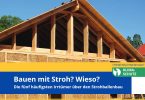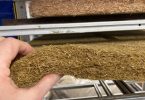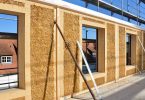During the past decades, the building industry has had a great focus on energy consumption during the use phase of a building, but currently, a more holistic view of the entire lifecycle of a building is starting to emerge. With this follows a greater interest in which building materials and techniques of construction are considered. At the same time the request for a living environment free from toxins and allergenic substances, providing the basis for stress-free living and working conditions is increasingly demanded by clients for newly built homes. Since straw-built houses supply a possible solution for these demands, while also offering the opportunity for very financially competitive solutions, it is of interest to determine their appropriateness in the design phase of a building.
Through a study carried out by means of a review of the current state-of-the-art literature on straw construction, and a series of qualitative interviews with a variety of stakeholders from previous straw build housing projects, results were gathered to find the most influential motives, barriers and considerations for straw build housing construction. Based on this empirical data, a design guide has been produced to support communication between clients and the consultants and facilitate the straw build design and decision-making process. The intended audiences for the design guide are clients of small-scale construction projects, architects, engineers, builders of straw construction, homeowner-builders and entrepreneurs considering the use of, straw construction.
The aim of the design guide is both to act as inspiration for the clients by outlining the benefits, determine whether straw construction would be suitable for a given project and if so, to suggest a specific approach to the design and development of a successful straw-build project, running through the main considerations and pitfalls. The main concluded difference between straw build and more conventional building techniques is not that there are more difficulties or uncertainties related to straw build, but that they are less commonly dealt with and thus perceived as a barrier to straw build, rather than simply a problem of a general character.
Authors: White, Caroline Meyer; Howard, Thomas J.; Lenau, Torben A.; 15.08.2012






